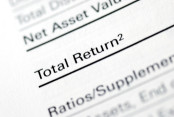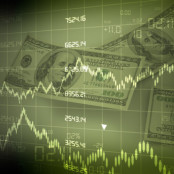The shortened trading week provided no comfort for investors looking for the end of market volatility. Once again, the domestic and international stock markets continued their whip-saw fashion.
Driving this has been the hopes of stimulus packages in both Europe and China. China continues to fight a flight from its stocks and stagnating growth. At the same time, Europe is still grappling with slow to non-existent economic growth, while the Greek drama music plays in the background. Here at home, the big dance — read: the Federal Reserve’s interest rate decision — continues to draw near.
Data hasn’t been conclusive in either direction, prompting market volatility. Consumer confidence, unemployment claims and inflationary data all were mixed when reported this week. That certainly puts Janet Yellen and the Fed at odds about next week’s rate decision.
Monday
The U.S. markets were closed for the Labor Day holiday. As such, there were no reports or other economic information to discuss from Monday. Likewise, there were no dividend-based earnings announced or reported
Tuesday
The U.S. markets kicked-off the week with a bang. Following an announcement from China’s chief finance minister that Beijing would establish “more forceful” fiscal policies designed to boost growth, the U.S. markets surged. The Dow Jones Industrial Average popped 390.30 points, or 2.4%. Adding fuel to the fire were announcements from Japanese Prime Minister Shinzo Abe on the success of stimulus policies in Japan.
On the economic data front, the Federal Reserve released two reports: Labor Market Conditions Index and Consumer Credit Reports. The Labor Market Conditions Index improved to 2.1. Likewise, the Consumer Credit Report showed a decrease in the amount of revolving debt outstanding. However, the $19.1 billion was more than expected, indicating that consumers were happy with the nation’s trajectory.
- Mid-tier regional bank holding company Kentucky First Federal Bancorp (KFFB) reported earnings of 25 cents per share. That represented an increase of 7% versus the year-ago period. While too small to garner analyst coverage, the Kentucky-based bank does yield 4.65%.
- Investors liked the way Men’s Wearhouse (MW) looked when it reported a 2 cents per share earnings beat. The suiting and men’s fashion retailer reported earnings of $1.07 per share. While that was slightly less than last year, investors still cheered the results. MW has a dividend yield of 1.5%.
Wednesday
What the market giveth, the market doth taketh away. The hallmark of Wednesday was one of the wildest price swings — positive to negative — seen in quite a while. At one point, the Dow was up over 172 points on the fresh stimulus hopes. However, the benchmark index managed to finish in the red (dropping 239.11 points or 1.4%) to reach 16,253.57. The S&P 500 fell 27.37 points or 1.4%, while the tech-heavy NASDAQ Composite lost 55.40 points or 1.2%. The cause of the plunge was attributed to technical and not actual fundamental reasons.
The only piece of economic data released was the Bureau of Labor Statistics’ Job Openings and Labor Turnover Summary (JOLTS). The report came in much higher than expected. The 5.7 million reading indicates that there were more jobs created last month than previously thought.
- Fresh off of its education division spin-out, bookseller Barnes & Noble Liquid error: internal reported a loss of 68 cents per share before the market opened. That completely took analysts and investors by surprise as they expected the retailer to post a profit of 12 cents per share. BKS currently yields 3.79%.
- Wednesday also turned out to be a bad day for RF Industries, Ltd. (RFIL). The maker of various cable, connector and electronic components reported a profit of 5 cents per share. That was the same amount as last year’s period, but missed analyst projections by 2 cents. RFIL currently yields 6.22%.
Thursday
With muted trading volume, the markets had a similar, albeit reverse and not as extreme, roller coaster ride on Thursday as on Wednesday. Starting the day in the red, the Dow managed to gain 76.83 points or 0.5% to finish at 16,330.40. The S&P 500 jumped 10.25 points and the NASDAQ tacked on 39.72 points. The Dow still remains about 11% from its May all-time high.
Pushing the indexes higher where bullish jobs and inflation reports. The Labor Department announced that unemployment claims, which are a proxy for layoffs, fell by 6,000 to 275,000 for the week ended September 5. That number was in-line with analysts and was a sign of health in the labor market. At the same time, prices for imported goods fell in August by 1.8%. That was the biggest decline since January.
- Good times were not had at ski resort, parks and hotel owner/operator Peak Resorts Inc. (SKIS). The firm reported a much larger loss than analysts had expected. SKIS managed to lose 51 cents per share for the latest quarter. That was about 1 cent higher than what analysts were looking for. SKIS yields 7.59%.
Friday
This Friday provides the last few pieces of the puzzle with regards to the Fed’s pending rate hike. Both the Producer Price Index (PPI) and the University of Michigan (UoM) preliminary Consumer Confidence Report will show just how the American consumer is doing. Analysts expect the measure of the change in prices of finished goods is expected to show a decline of 0.1%. And while consumers will cheer that they are paying less for goods, they still won’t be as jolly as they were a few months ago. If either of these are poor it could hold off the Fed’s rate decision.
The Week Ahead
Next week is a storm of economic data. Housing starts, buildings permits, dual manufacturing indexes, retail sales all will be released during the last half of the week. All of these major economic data points will lead up to the only thing that has mattered over the last few weeks. On September 17, the Federal Reserve will make a decision on whether or not it will hike rates for the first time in 10 years. Trading should be volatile leading up to and after the Fed’s decision.
Next week will also see some of techs biggest dividend stars: Oracle (ORCL ) and Adobe (ADBE) both report earnings.





